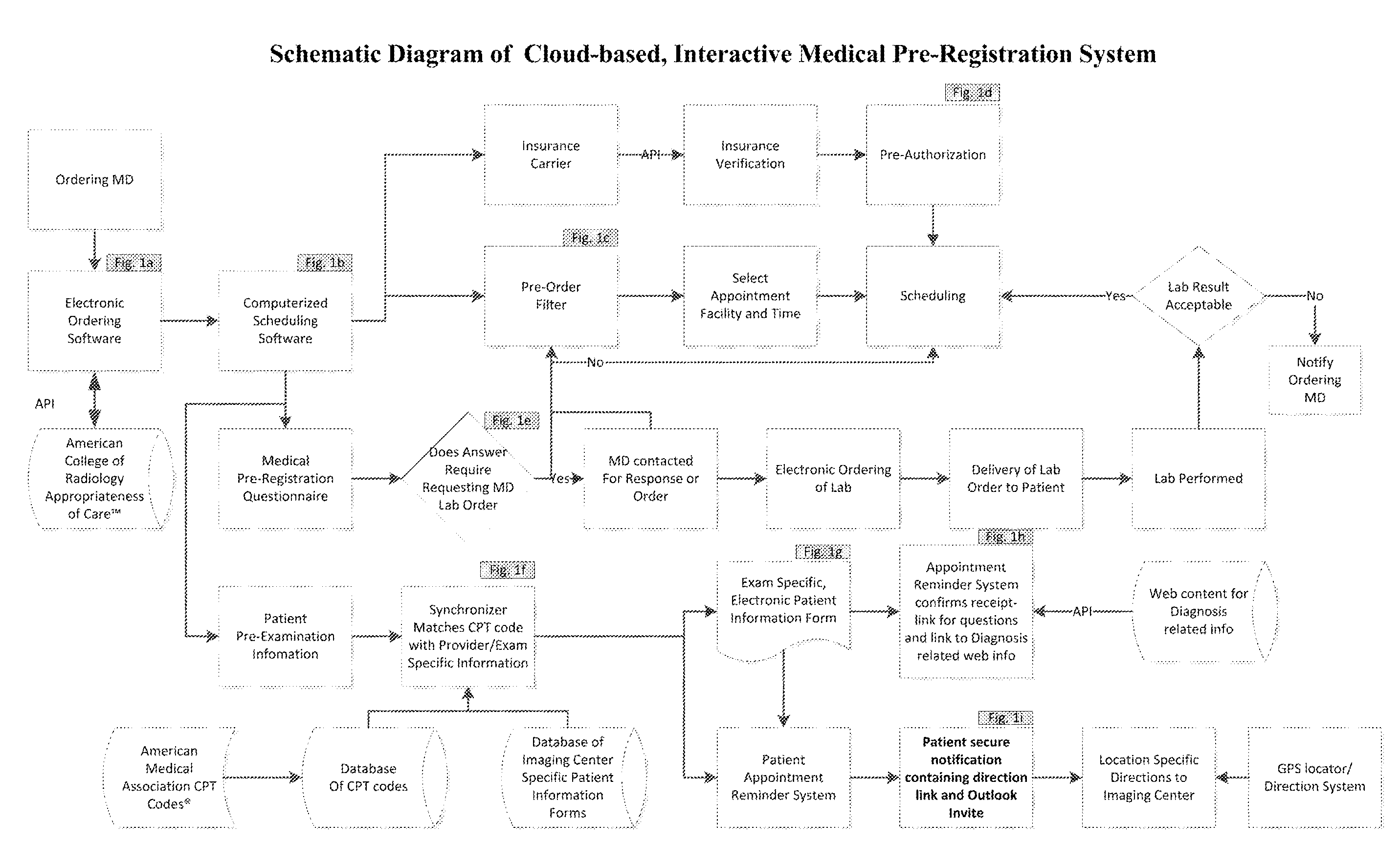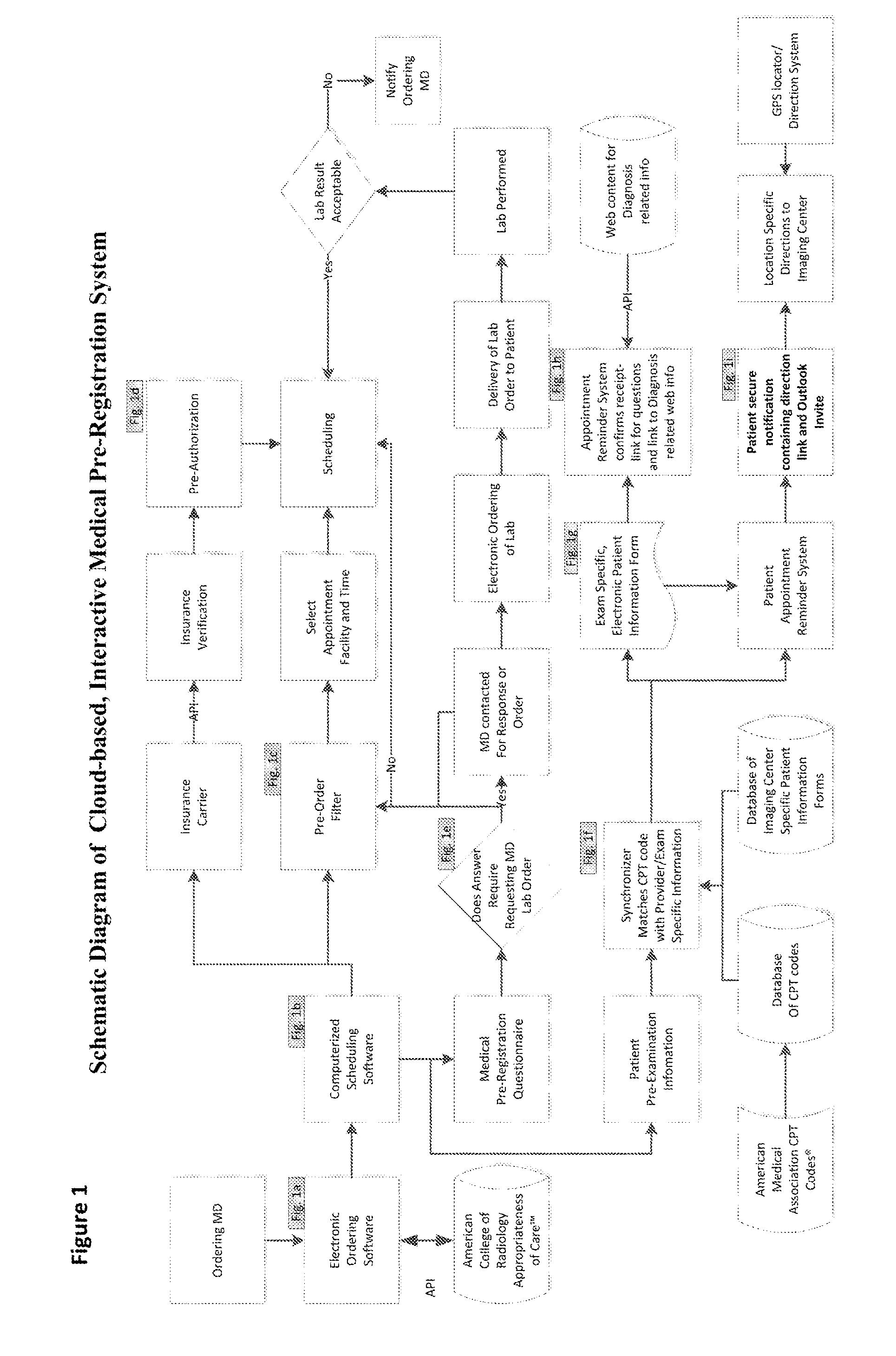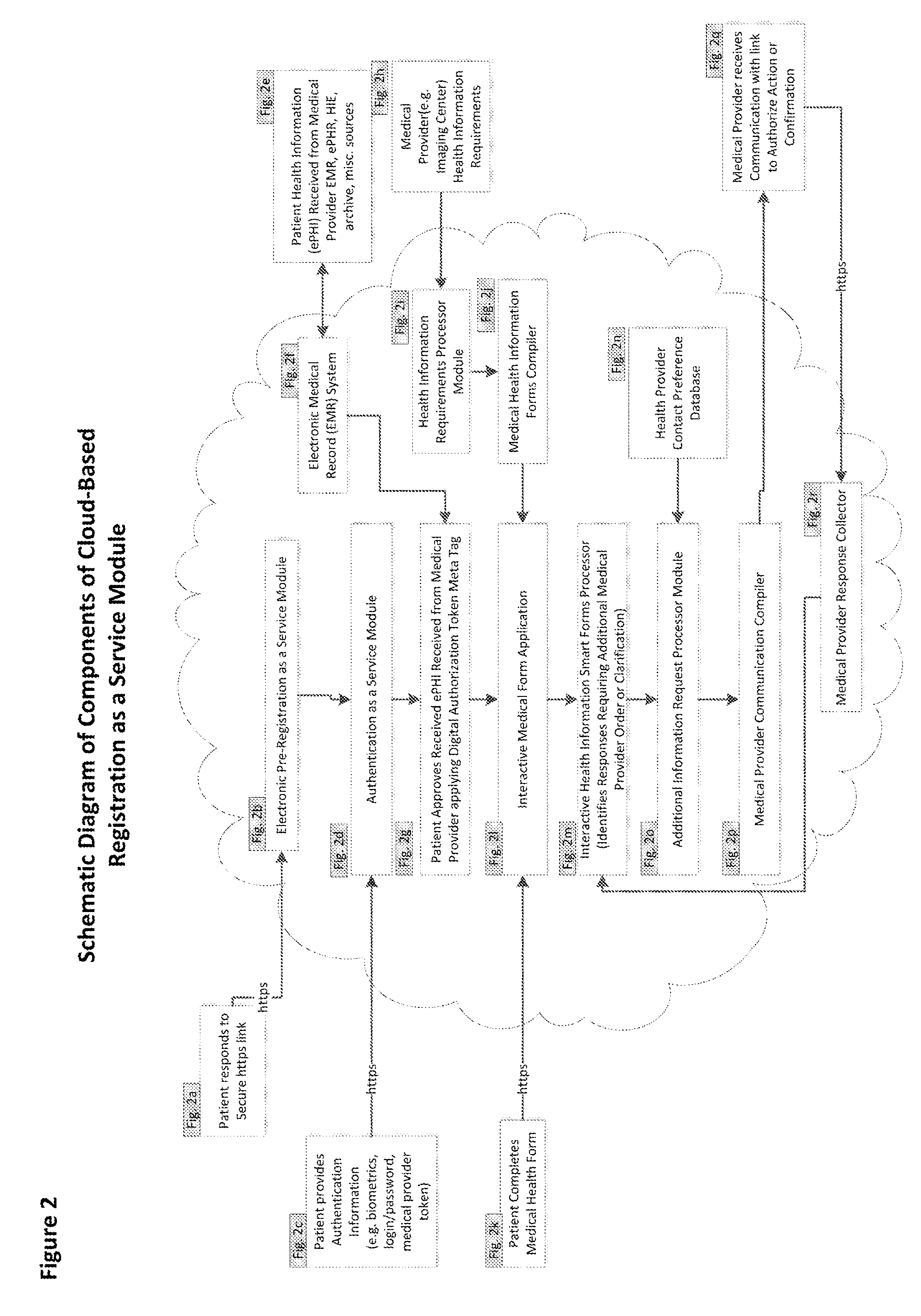Methods for Establishing a Cloud-based, Interactive Medical Pre-Registration System
a medical pre-registration system and interactive technology, applied in the field of cloud-based interactive medical pre-registration systems, can solve the problems of ineffective interoperability between medical practices, inability to efficiently and universally collect, aggregate and transfer patient information among all medical providers, and inability to achieve information sharing between emr systems. the effect of saving time and money
- Summary
- Abstract
- Description
- Claims
- Application Information
AI Technical Summary
Benefits of technology
Problems solved by technology
Method used
Image
Examples
Embodiment Construction
[0022]Cloud computing provides a computer framework for stakeholders to communicate outside the proprietary framework of any single EMR system. A private cloud computing network containing secure authentication and authorization modules can provide a secure, interactive method of data exchange, notification, and electronic ordering and decision making between patients and medical providers that do not share a single electronic medical record system. This private cloud network can be configured to receive the patient's medical information (ePHI) from a variety of sources including patient's electronic personal health method (ePHR), health information exchange (HIE), the EMR systems of the patient's medical providers (hospitals, doctors' offices, laboratories, and diagnostic imaging facilities, amongst others) and thereby providing interoperability between medical providers that do not share the same EMR system. Patients and their doctors can interact quickly when they are both intera...
PUM
 Login to View More
Login to View More Abstract
Description
Claims
Application Information
 Login to View More
Login to View More - R&D
- Intellectual Property
- Life Sciences
- Materials
- Tech Scout
- Unparalleled Data Quality
- Higher Quality Content
- 60% Fewer Hallucinations
Browse by: Latest US Patents, China's latest patents, Technical Efficacy Thesaurus, Application Domain, Technology Topic, Popular Technical Reports.
© 2025 PatSnap. All rights reserved.Legal|Privacy policy|Modern Slavery Act Transparency Statement|Sitemap|About US| Contact US: help@patsnap.com



